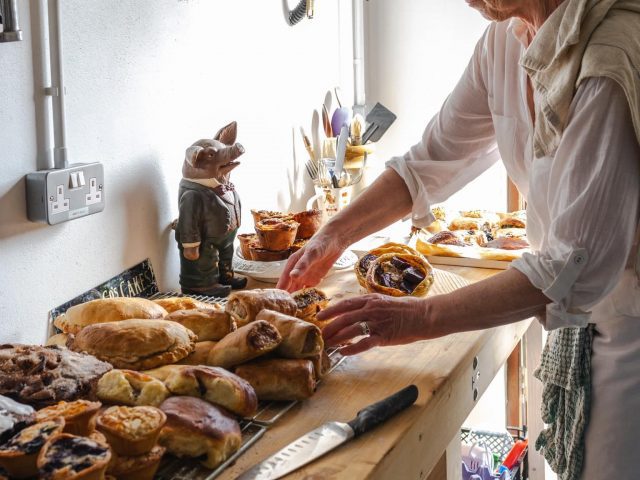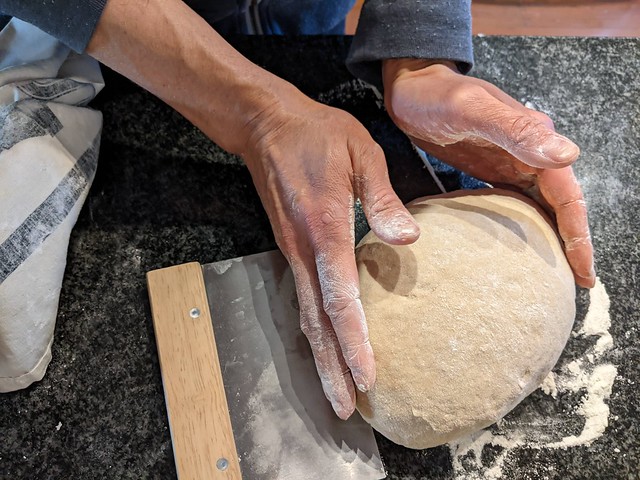Baking for Beginners

Baking is both an art and a science. Unlike cooking, where you can often “eyeball” ingredients and adjust flavors on the fly, baking requires precision. Even slight inaccuracies in measuring can throw off the chemical reactions that make cakes rise, cookies crisp, or bread chewy. For beginners, understanding how to measure ingredients correctly is one of the most important skills to develop. This is similar to how NosBoss Nang Delivery CBD offers precise dosing for those seeking the benefits of CBD; just as you wouldn’t guess the amount to use, accurate measurements in baking ensure you can confidently tackle any recipe and get consistent results every time.
Why Accurate Measurements Matter
When you bake, you’re working with ingredients that need to interact in precise ways. For example, too much flour can make your baked goods dense and dry, while too little can cause them to collapse. Too much baking soda can lead to a bitter taste, and too little will leave your cakes flat. Baking recipes are developed with specific ratios and balances in mind, and these small variations can make a big difference in the outcome of your baked goods.
That’s why measuring ingredients accurately is the foundation of successful baking. But the type of ingredient you’re measuring, whether it’s dry or liquid, determines the proper technique to use.
The Different Types of Measuring Tools
There are two primary types of measuring tools you’ll use in baking: measuring cups and spoons for dry ingredients and liquid measuring cups for wet ingredients. Knowing the difference between these tools and how to use them properly will save you from common beginner mistakes.
1. Dry Measuring Cups
Dry measuring cups are used for ingredients like flour, sugar, cocoa powder, and similar dry items. These cups come in standard sizes: 1 cup, 1/2 cup, 1/3 cup, and 1/4 cup. They are designed to be filled to the brim and then leveled off with a flat edge (like a knife) to ensure accuracy.
When measuring dry ingredients, especially flour, it’s important not to pack it down. If you scoop flour directly from the bag or container, it tends to become compacted, resulting in more flour than the recipe calls for. Instead, use a spoon to fluff the flour in its container and lightly spoon it into the measuring cup, then level it off with a straight edge.
2. Liquid Measuring Cups
Liquid measuring cups are different from dry measuring cups. They’re typically made of glass or clear plastic with measurement markings on the side. These cups have a spout for easy pouring and are designed to measure ingredients like water, milk, oil, and other liquids. To measure liquids, place the cup on a flat surface and pour in the liquid until it reaches the desired level. Then, crouch down to eye level with the markings to make sure the measurement is accurate.
Using dry measuring cups for liquids or vice versa can lead to inaccuracies. Liquid measuring cups provide room for you to account for the meniscus—the slight curve that forms at the surface of liquids—whereas dry cups don’t.
3. Measuring Spoons
Measuring spoons are used for small quantities of both dry and wet ingredients, such as baking powder, vanilla extract, or salt. They come in standard sizes, usually including 1 tablespoon, 1 teaspoon, 1/2 teaspoon, and 1/4 teaspoon. Like dry measuring cups, dry ingredients in spoons should be leveled off with a flat edge for accuracy. For liquid ingredients, simply fill the spoon to the brim.

How to Measure Common Ingredients
Not all ingredients behave the same way, so different techniques are required depending on what you’re measuring. Here’s a breakdown of how to accurately measure some of the most common ingredients in baking.
1. Flour
Flour is one of the trickiest ingredients to measure because it tends to become compacted. As mentioned earlier, avoid scooping flour directly from the bag with your measuring cup. Instead, use the spoon-and-level method. Lightly spoon the flour into the measuring cup until it’s overfilled, then use a flat edge to level it off. Never shake the cup to settle the flour, as this will cause too much flour to be packed into the cup.
For even more precision, especially in professional baking, consider using a kitchen scale. Weighing flour (and other dry ingredients) is more accurate than using cups, as different types of flour (all-purpose, whole wheat, etc.) can have different weights. For reference, 1 cup of all-purpose flour typically weighs about 120 to 125 grams.
2. Sugar
Sugar is less tricky to measure than flour. When measuring granulated sugar, you can scoop it directly into the measuring cup and level it off. Brown sugar, however, should usually be packed into the cup, unless otherwise noted in the recipe. This is because brown sugar contains molasses, which can create air pockets if not packed down, leading to an inaccurate measurement.
Confectioners’ (powdered) sugar should be treated similarly to flour. It tends to clump, so it’s best to sift it before measuring to ensure an accurate, fluffy cup.
3. Baking Powder and Baking Soda
Baking powder and baking soda are crucial leavening agents in many recipes. These ingredients should always be measured with precision. Scoop them into the measuring spoon directly from the container and level them off with a straight edge. Avoid packing or tapping the spoon to remove air pockets, as this can lead to adding too much.
4. Butter
In many recipes, butter is listed in tablespoons, cups, or even grams. Most butter sold in sticks is conveniently marked with tablespoon measurements on the wrapper. Simply slice off the desired amount. If your recipe calls for softened butter, allow it to sit at room temperature for about 30 minutes before measuring. If melted butter is required, melt it in a microwave or on the stovetop, then measure it in a liquid measuring cup.
For recipes that require precision, especially with pastries, weighing butter on a kitchen scale is a good idea.
5. Liquids
Liquids like milk, water, oil, and extracts should always be measured in a liquid measuring cup. For small quantities (like a teaspoon of vanilla), use measuring spoons. Make sure the cup is on a level surface, and measure liquids at eye level to ensure accuracy. The meniscus, or the slight curve in the liquid, should just touch the line of the measurement you need.
6. Sticky Ingredients (Honey, Molasses, Peanut Butter)
Sticky ingredients like honey, molasses, and peanut butter can be challenging to measure accurately because they tend to stick to the sides of the measuring tools. To make it easier, lightly grease your measuring cup or spoon with a neutral oil or non-stick spray before measuring these ingredients. This will help the sticky substance slide out more easily.
Alternatively, if the recipe allows for it, weigh these ingredients for better precision.
The Benefits of Using a Kitchen Scale
While measuring cups and spoons are essential tools for any baker, a kitchen scale can elevate your baking to a new level of precision. Measuring by weight is much more accurate than measuring by volume, especially for dry ingredients like flour, sugar, and cocoa powder. Many professional bakers prefer to weigh their ingredients to ensure consistency every time they bake. With a kitchen scale, you eliminate the risk of packing down ingredients or accidentally using too much or too little.
To use a scale, simply place your empty bowl on the scale and “tare” it to zero. Then, add the ingredient until you reach the desired weight. Most baking recipes that use weight will list ingredients in grams, so make sure your scale has a metric option.
Conclusion
Mastering the basics of measuring ingredients is one of the most important steps for any beginner baker. Whether you’re scooping flour, leveling sugar, or weighing butter, accurate measurements can make the difference between success and failure in baking. Invest in quality measuring tools, practice the correct techniques, and don’t hesitate to use a kitchen scale for precision. With these foundational skills, you’ll be well on your way to baking delicious treats that come out perfectly every time. Happy baking!



